Eyes on sociability explores human social behavior within space by deploying machine vision technology to understand these patterns and draw conclusions.
Throughout history, the public space has played a key role in the social life of citizens. It served as a gathering space, seasonal and rotational markets, cultural festivities and many more. Through our study we attempt to understand how people interact with these spaces, with urban elements and furniture, with each other in relation to space. We also simulate these patterns in order to visualize and understand these relationships.
Methodology
In order to understand people’s behavior in space, we ran a number of analyses. These layers are Urban morphology, Urban elements and amenities, Local distances between people and elements, the concentration of people, user speed and IDs. By overlaying all these analyses and understanding correlations we attempt to extract physical attributes of the space that contribute to sociability.
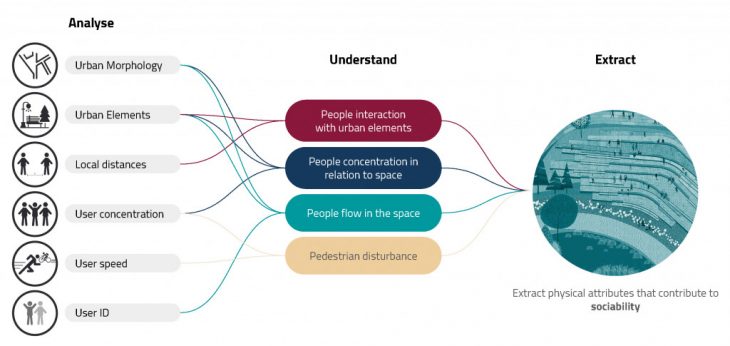
Analysis and Experiment Setup
For the purpose of this study, we chose the plaza of the Barcelona Cathedral due to its iconic nature and variety of urban elements for study.
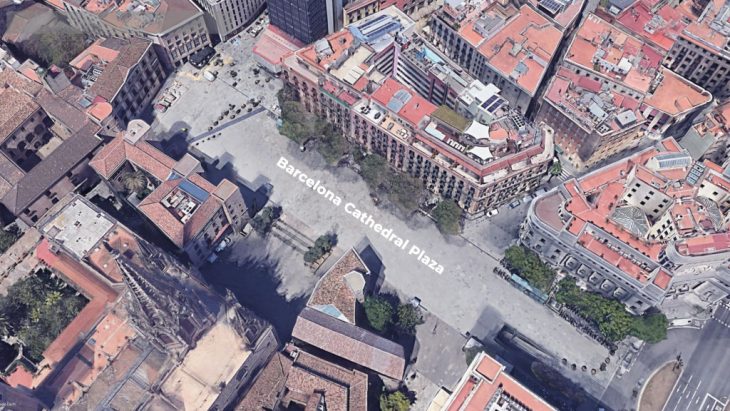
A number of videos were recorded of the plaza on weekdays and on the weekend. In order to form a better understanding of the space activities at different times the videos were also recorded in the morning and afternoon.
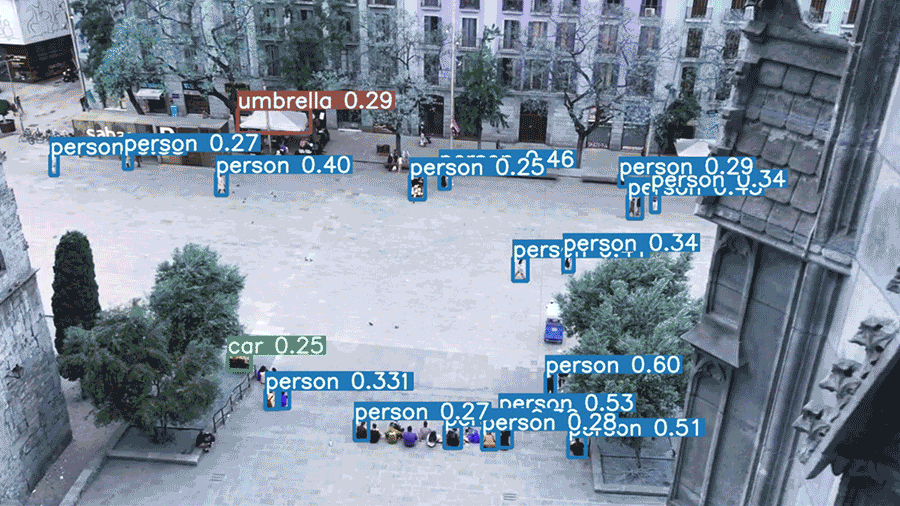
To set up the experiment, data was collected from the existing site. The urban morphology building footprints, all existing amenities and urban furniture in addition to trees form the base environment for the analysis.
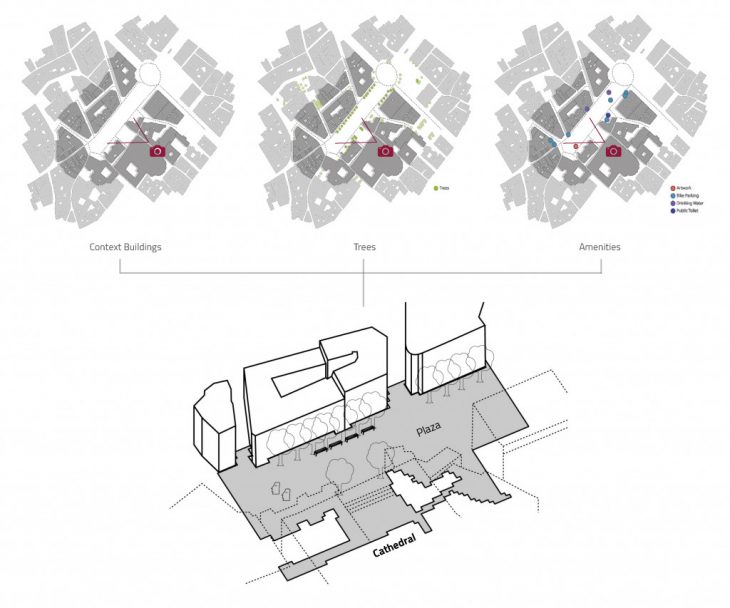
1. People interaction with urban elements:
The first analysis is about how people interact with the urban elements and the influence of these elements on people’s behaviour. The space people keep from static features depends on whether they intend to use them or not. To carry out the analysis we first defined a buffer area of 8 metres from the elements studied. Without taking into account the people who are within 1 meter, we have calculated the mean distance of the people from the objects to understand the space they maintain. Finally we represented the distribution of users around the element within this area.
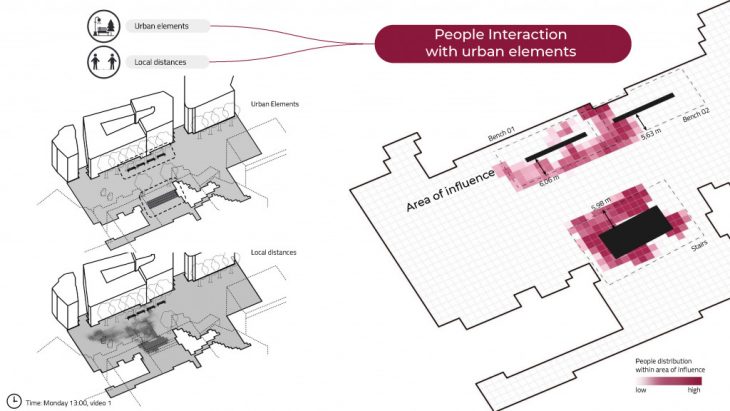
Also we analysed in more detail the influence of the church in the public space which is in front of it. Generally people stop in front of the stairs and gather or take photos from there. There is not a tendency of going upstairs. The church is defining the characteristics of this specific area.
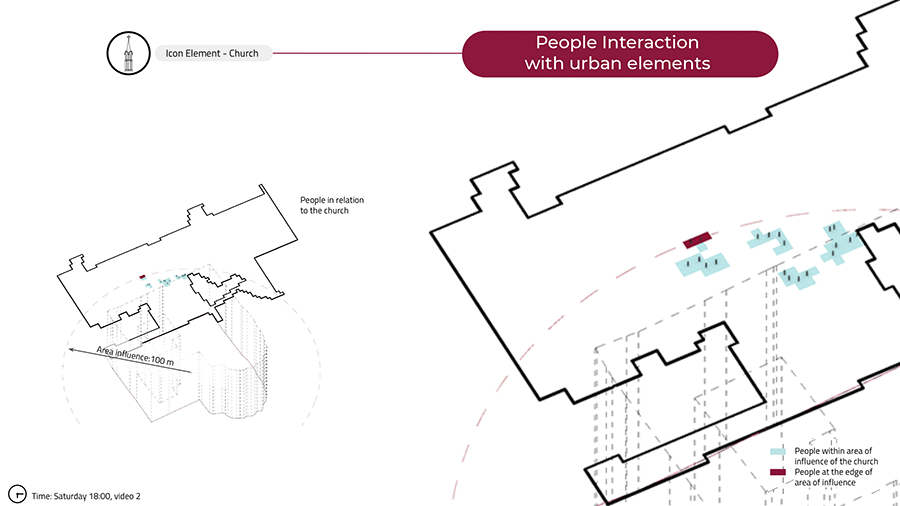
2. People interaction in relation to space:
This part helps us to understand how the concentration of people is distributed into groups and their numbers. Also, estimate their proximity to any of the identified urban elements and the distance within a group’s formation. First we define the group size based on the proximity distance between the people, this clusters different groups. Later, we measure the distance of each cluster to the identified street objects.
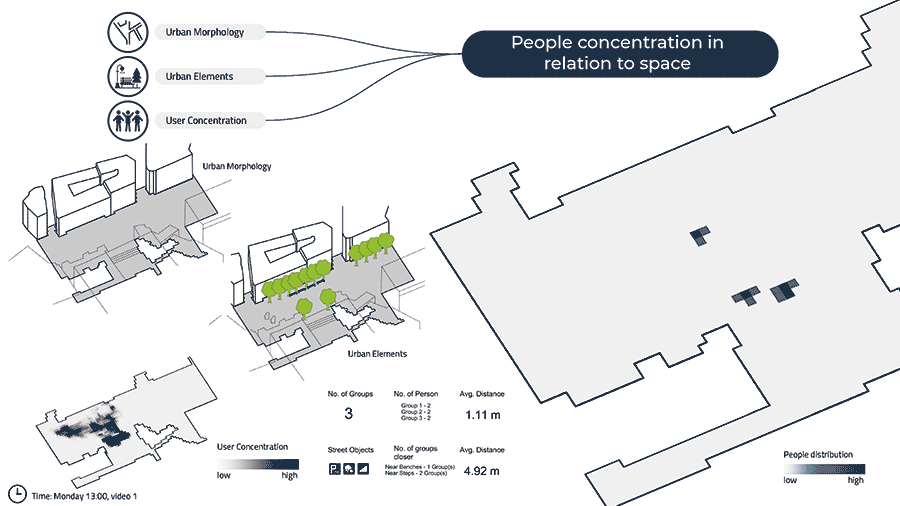
3. People flow in the space:
With the help of deepsort github open source, we generated the movement points based on individual ID. This process was tested in two different sample videos. Later, in grasshopper we measure the distance travelled from the initial point to the final point. This helps to visualize the movement pattern and the travel distance and location within the plaza.
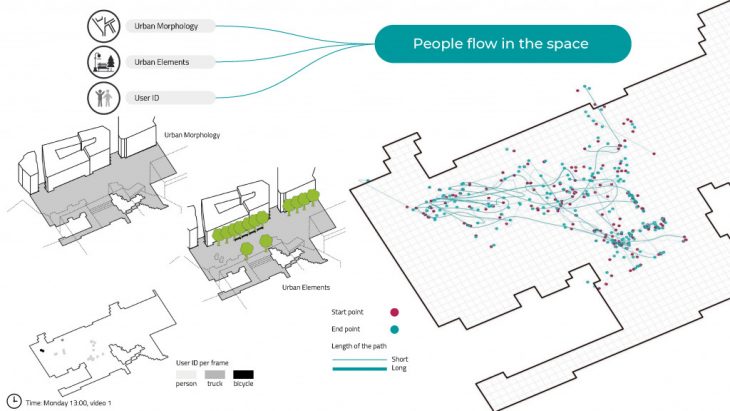
4. Pedestrian disturbance:
For this analysis, we aimed to understand the influence of other means of transport on pedestrian movement and concentration. We identified the concentration of people, whether walking or standing still, in comparison to an analysis of speed we got from extracting other typologies of users: cars, motorcycles, bikes, trucks and tuk-tuks were considered to be at a higher speed than people. Therefore, their paths pose a barrier to pedestrians, and the more high-speed users a zone has, the harder it is for pedestrians to cross from one side to the other, which is represented through conceptual vertical lines.
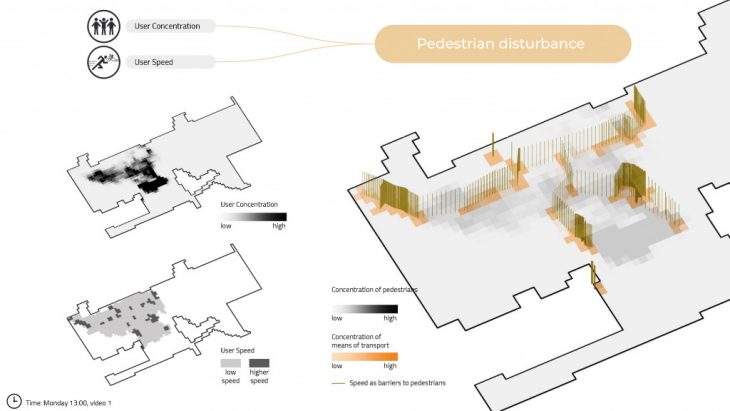
Conclusions
As an outcome of this analysis, it is worth noting that more analysis is required in order to form a clearer picture of people’s behavior. However, from our experiment we were able to identify a number of behaviors.
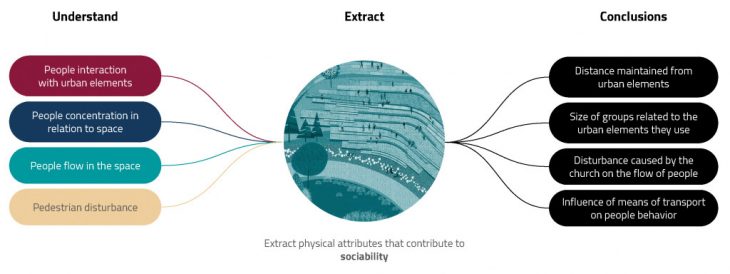
- On average, people walk 6m away from static elements if they don’t intend to use them
- People stayed away from the cathedral because the stairs become a new barrier and to be able to see the entire facade
- Groups larger than 3 people usually choose to sit or gather around the urban steps
- The cathedral acting as an attraction and a “pause” moment in the public space, people slow down and step back to take in the view
- Moving vehicles, bicycles and slow mobility cause little disturbance to sociability in most cases unless they are staying for a long time
Eyes on Sociability is a project of IAAC, Institute for Advanced Architecture of Catalonia developed at Master in City & Technology in 2020/21 by students: Iñigo Esteban Marina, Kevin Aragón, Laura Guimarães, Leyla Saadi & Sridhar Subramani, and faculty: Aldo Sollazzo, Iacopo Neri & Soroush Garivani.